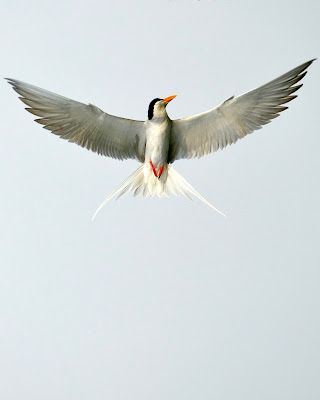Starting points of Long-distance migration most likely evolved from a genuinely straightforward requirement for food sources. The starting points of long migration patterns are significantly more complex. The migration of the birds is somewhat controlled by their inheritance. They also show responses to geology, climate, food sources, day length, and other different environmental factors.
It seems peculiar for the birds that spend their colder times in jungles and then leave their homes and migrate towards the North.
Why do they migrate towards the North in spring?
One estimate is that through numerous ages, the tropical forefathers of these birds scattered from their tropical breeding sites towards the north. The excess supply of bug food and more long day length allowed them to raise more young ones (4-6 by and large) than their staying tropical family members (2-3 overall). During winters, as the harsh climate and the shortage of food supply made life more troublesome, the birds kept on getting back to their tropical homes. With time, migratory birds have evolved and have advanced from structures that started in the jungles.
For what reasons do birds migrate?
Birds migrate from areas of low and diminishing resources to highly productive and supporting environments. The two crucial reasons behind migration are food sources, and nesting sites/ breeding areas.
Birds that live in the Northern Hemisphere will migrate towards the North in the spring to get the advantage of the insect population, mature plants, and abundance of breeding areas. As winter draws near and the accessibility of the bugs and other food drops, the birds move south once more. getting away from the cold is a natural factor getting numerous species, including hummingbirds, can endure frosty temperatures until a sufficient supply of food is accessible.
For a bird, traveling hundreds or thousands of miles between its breeding and non-breeding areas is a troublesome, risky journey.
So, for what reasons do birds migrate? What reasons send numerous birds into the dangerous skies each spring and fall? There is more than one reason behind these migrations, yet everything comes to survival for every individual bird and its families also.
Migration for Food
For all birds, one of the standard main thrusts behind migration is food shortage. Assuming that all birds were to remain in similar rich, tropical regions for the whole year, food would turn out to be scant and reproduction would find success with undernourished parents and hungry hatchlings. In any case, as food sources recover in northern locales each spring, a huge number of birds migrate to those areas to exploit the overflow. As food supplies then diminish in the fall, birds return to tropical locales that have been recharged, meanwhile.
This example of migration for food is valid for neotropical travelers, yet in addition, short-range migratory birds might move just restricted distances to seek occasional food sources. Bird dispersions are likewise the after-effects of the changes in the food supply, with more noteworthy dispersions happening whenever food supplies are low for northern birds. That shortage makes them look for sufficient food further south. Indeed, even birds that do not ordinarily migrate may wind up on a journey when hunger undermines.
Migration for Family
Over centuries, birds have the reproducing conditions can fluctuate for each bird's species and many include many elements. Enough food sources, environments providing suitable breeding sites, and shelter offering good, better security than solitary sets of bird guardians are suitable for reproduction purposes.
It might appear problematic to think that birds migrate to help their chicks survive. Large numbers of bird guardians rapidly forsake their young ones as they mature, leaving the chicks, unpracticed birds to make their risky, first flight without any directions and guidance. It is precisely because the birds have brought their chicks up in a moderately rich, safe climate that provides young ones with the benefit of being ready to make that journey.
Fun Fact
The Arctic tern ventures 49,700 miles a year between its favorable attic and the Antarctic coast. Their yearly process is the longest known bird migration on the planet.
Disease
Any huge gathering of birds packed in one sort of natural environment is defenseless to parasites and illnesses that can affect many birds in a brief time frame and sickness can devastate rearing sites. Birds that spread to various areas, nonetheless have less possibility of spreading an illness to their whole population, including their new off-springs.
Predators
Habitats with plentiful food sources for the whole year likewise draw more prominent numbers of predators. Migratory birds, moving to various locations can stay away from that surge of hunters. allowing their young ones a great opportunity for development. Many birds even migrate to specific natural habitats that are almost distant from predators, like steep seaside cliffs or rough seaward islands.
Environment
Birds have developed
various kinds of adaptations to endure various environments, and changes in
those environments can manipulate migration. Many birds leave their
Arctic favorable places, for instance, when temperatures start to fluctuate,
and they need more calm territory since they can't endure the severe cold.
Essentially, the most smoking tropical habitats can be a brutal climate for
raising sensitive chicks, and it is profitable to lay eggs further north in
cooler regions.
Eventually, the motivations
behind why birds migrate all come down to endurance: in addition to the endurance
of the migratory birds themselves, in addition to the endurance of the chicks
they will raise. Finding more suitable food sources, looking for more secure
natural surroundings, and staying away from predators are all motivating
factors of such great populations. Big migrations permit birds to make due for
another generation and permit birders the delight of seeing one more year's
movement.
I hope your query about migratory birds and their behaviors might have been solved. If you wanna ask more, lemme know about that in the comments section below. Thank you!











If you have any doubt, let me know.